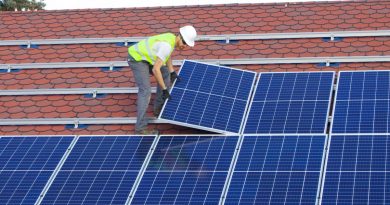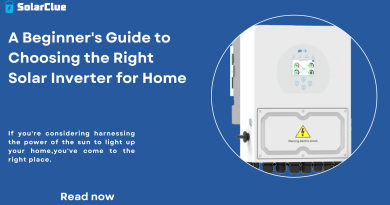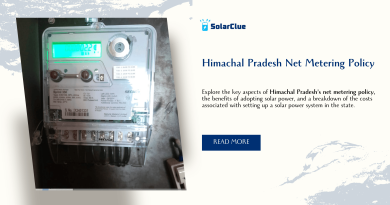Off-Grid Solar Power Solutions: What You Need to Know
In today’s world of rising energy costs and environmental awareness, off-grid solar power systems are becoming an increasingly popular solution for both homes and businesses. By generating your own solar energy, you can achieve energy independence while reducing your carbon footprint. This guide provides an in-depth look at off-grid solar system essentials, including solar panel options, costs, and setup considerations.
Table of Contents
- 1 What is an Off-Grid Solar Power System?
- 2 How Does an Off-Grid Solar System Work?
- 3 Factors Influencing Solar Panel Prices
- 4 Understanding Photovoltaic Panel Prices and ROI
- 5 Solar Panels for Home: Choosing the Right System
- 6 Maintenance and Longevity of Off-Grid Solar Systems
- 7 Pros and Cons of Off-Grid Solar Systems
- 8 Incentives and Financing Options for Solar Systems
- 9 Common Myths About Off-Grid Solar Systems
- 10 Final Thoughts on Off-Grid Solar Power Solutions
- 11 Frequently Asked Questions (FAQs)
What is an Off-Grid Solar Power System?
An off-grid solar system is a stand-alone solution that generates electricity independently without relying on the main power grid. Unlike grid-tied systems, off-grid setups use solar panels to capture sunlight, convert it into electricity, and store excess energy in batteries for later use.
Key Components of an Off-Grid Solar Power System
1. Photovoltaic panels (commonly known as solar panels)
2. Charge controller
3. Battery storage system
4. Inverter
5. Backup generator (optional but recommended)
Benefits of Off-Grid Solar Systems
1. Energy independence
2. Protection from power outages
3. Reduced electricity bills
4. Lower environmental impact
How Does an Off-Grid Solar System Work?
1. Solar panels absorb sunlight and generate direct current (DC) electricity.
2. A charge controller regulates the voltage and current to prevent overcharging the batteries.
3. Excess energy is stored in batteries for use during periods of low sunlight.
4. An inverter converts the DC electricity into alternating current (AC) for household appliances.
When Are Off-Grid Systems Ideal?
Off-grid systems are best suited for remote locations where connecting to the grid is expensive or impractical. They’re also popular among homeowners seeking full energy independence.
Factors Influencing Solar Panel Prices
The solar panel price depends on several factors, including panel efficiency, type, and brand. Typically, higher-efficiency panels cost more but require less space for installation.
Common Types of Solar Panels
1. Monocrystalline Solar Panels: Highly efficient and long-lasting.
2. Polycrystalline Solar Panels: Lower cost but slightly less efficient.
3. Thin-Film Solar Panels: Lightweight and flexible but lower in efficiency.
When evaluating solar system price for home installation, factor in not only the photovoltaic panels price but also the cost of batteries, inverters, and labor.
Understanding Photovoltaic Panel Prices and ROI
The photovoltaic panels price can vary widely depending on market demand, material quality, and installation costs. However, the long-term return on investment (ROI) from lower electricity bills and potential incentives often outweighs the initial expense.
How to Calculate ROI
1. Compare your current electricity usage and rates.
2. Consider tax credits and rebates offered in your area.
3. Factor in maintenance and operational savings over 20-25 years.
Many homeowners see payback within 5-10 years, depending on their system size and local energy rates.
Solar Panels for Home: Choosing the Right System
Selecting the right solar panels for home use is crucial to maximizing energy production and efficiency. Key factors to consider include:
1. Energy Needs: Assess your average daily energy consumption.
2. Roof Space and Orientation: Ensure your roof has enough space and is positioned to receive optimal sunlight.
3. System Size: A typical household may need a 5-10 kW system depending on location and energy use.
Comparing Solar System Prices for Home Use
The total solar system price for home varies depending on system size, type of solar panels, and additional features like battery storage. On average, prices can range from $10,000 to $30,000 before incentives.
Maintenance and Longevity of Off-Grid Solar Systems
Proper maintenance can significantly extend the life of your solar power system. Routine tasks include cleaning solar panels to remove dirt and debris, checking battery health, and inspecting wiring for damage.
How Long Do Solar Panels Last?
Most solar panels have a lifespan of 25-30 years, with efficiency declining slightly over time. High-quality panels and proper upkeep can ensure long-lasting performance.
Pros and Cons of Off-Grid Solar Systems
Advantages
1. Complete energy independence
2. No monthly electricity bills
3. Reduced environmental impact
Disadvantages
1. Higher upfront costs
2. Requires battery storage and backup solutions
3. Periodic maintenance needed
Incentives and Financing Options for Solar Systems
Governments worldwide offer incentives to promote solar energy adoption. These may include:
1. Tax Credits: Reduce your overall tax liability.
2. Rebates: Direct financial incentives to lower system costs.
3. Net Metering (for hybrid systems): Earn credits for feeding excess energy back into the grid.
Financing options, such as solar loans and leases, can also make solar power system installation more affordable.
Common Myths About Off-Grid Solar Systems
Myth 1: Solar Panels Don’t Work in Cloudy Weather
Fact: Solar panels generate electricity even in diffuse light conditions, though output may be reduced.
Myth 2: Off-Grid Systems Are Inconvenient
Fact: Modern technology ensures reliable power storage and management, making off-grid living seamless.
Myth 3: Solar Energy Is Too Expensive
Fact: While the initial solar system price for home can be high, long-term savings and incentives make it a cost-effective solution.
Final Thoughts on Off-Grid Solar Power Solutions
Investing in an off-grid solar power system is a sustainable and financially sound decision for those seeking energy independence. By understanding key components, costs, and maintenance requirements, you can design a system that meets your unique needs. With solar panels for home becoming more affordable and efficient, there’s never been a better time to switch to solar energy.
Frequently Asked Questions (FAQs)
1. How much does an off-grid solar system cost?
The total cost varies based on system size and components, but typically ranges from $15,000 to $50,000.
2. What are the main advantages of off-grid solar systems?
Key benefits include energy independence, protection from outages, and lower environmental impact.
3. How long do solar panels last?
Most solar panels last 25-30 years with minimal efficiency loss over time.
4. Can I install a solar system myself?
While DIY installation is possible, hiring a professional ensures safety and optimal performance.
5. Are there government incentives for installing solar panels?
Yes, many countries offer tax credits, rebates, and other incentives to promote solar energy adoption.
Got questions? We’ve got answers, visit our website!




